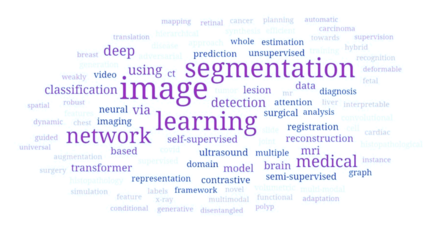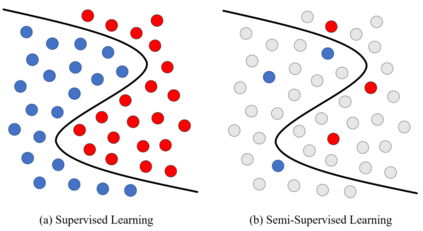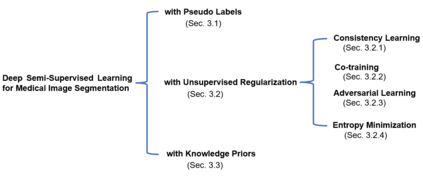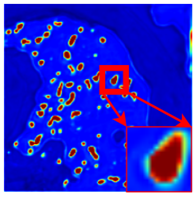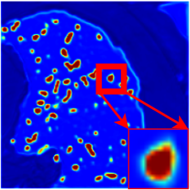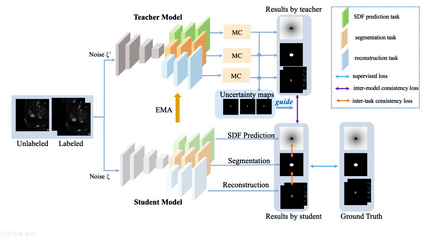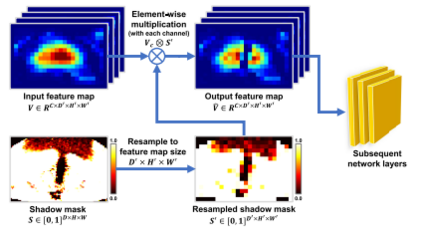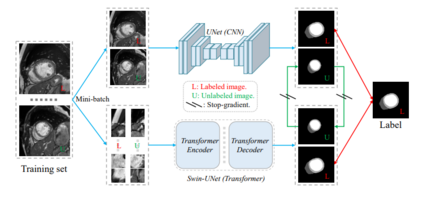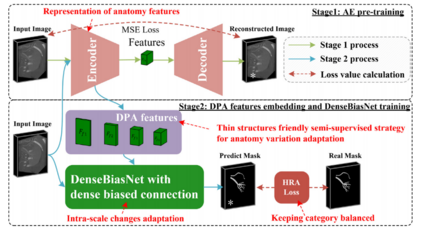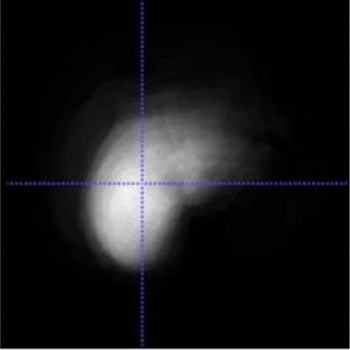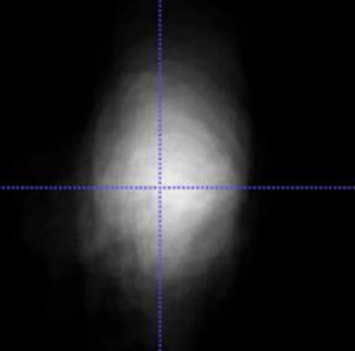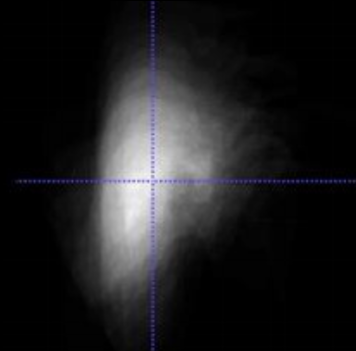Medical image segmentation is a fundamental and critical step in many image-guided clinical approaches. Recent success of deep learning-based segmentation methods usually relies on a large amount of labeled data, which is particularly difficult and costly to obtain especially in the medical imaging domain where only experts can provide reliable and accurate annotations. Semi-supervised learning has emerged as an appealing strategy and been widely applied to medical image segmentation tasks to train deep models with limited annotations. In this paper, we present a comprehensive review of recently proposed semi-supervised learning methods for medical image segmentation and summarized both the technical novelties and empirical results. Furthermore, we analyze and discuss the limitations and several unsolved problems of existing approaches. We hope this review could inspire the research community to explore solutions for this challenge and further promote the developments in medical image segmentation field.
翻译:医学图象分解是许多以图象指导的临床方法的一个基本和关键步骤。最近深层学习分解方法的成功通常依赖于大量贴标签的数据,特别是在只有专家才能提供可靠和准确说明的医学成像领域,获得这些数据特别困难和昂贵。半监督的学习已经成为一种吸引人的战略,并被广泛应用于医疗图象分解任务,以培养带有有限说明的深层模型。我们在本文件中对最近提议的半监督的医学图象分解学习方法进行了全面审查,并总结了技术创新和经验结果。此外,我们分析和讨论现有方法的局限性和若干尚未解决的问题。我们希望这一审查能够激励研究界探索应对这一挑战的解决办法,进一步促进医学图象分解领域的发展。

